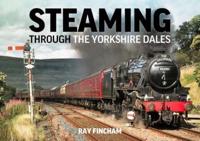Publisher's Synopsis
Throughout the nineteenth century, the roots of American industrialism began to take shape, and the railroad became the embodiment of mechanical progress. From the swelling Atlantic coast cities to the quaint New England villages to the prairie towns on the frontier, the ever-growing network of railroad lines helped connect the East to the Midwest. With its black steel hull and brightly painted passenger cars, the vivid image of modern travel captivated the American imagination and instilled in the national identity a steadfast sense of manifest destiny. Before the Civil War, the greatest concentration of railroad lines stretched throughout the North. After the war, however, the need for railroads beyond the Mississippi became paramount as thousands of settlers streamed West. For the Native Americans on the plains, the railroad became a highly visible image of a new, unfamiliar world, an actual end of their free-roaming ways. During its golden age, the railroad was often depicted in newspaper and magazine engravings. ""Harpers Weekly"" devoted great attention to the railroad, and ""American Railroads of the Nineteenth Century"" exhibits several hundred plates that appeared in that popular magazine in the last century. With accompanying text, ""American Railroads of the Nineteenth Century"" traces the history of the development and growth of the transcontinental lines. Encompassed are such issues as labor disputes, mail and freight service, urban mass transit systems, and train disasters.








